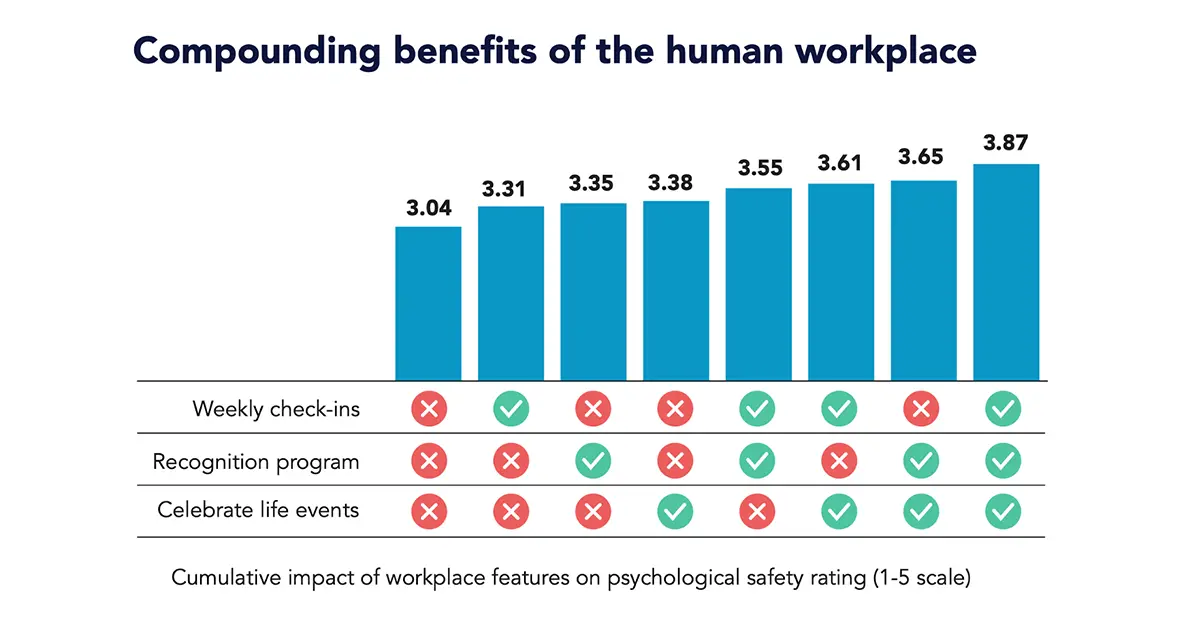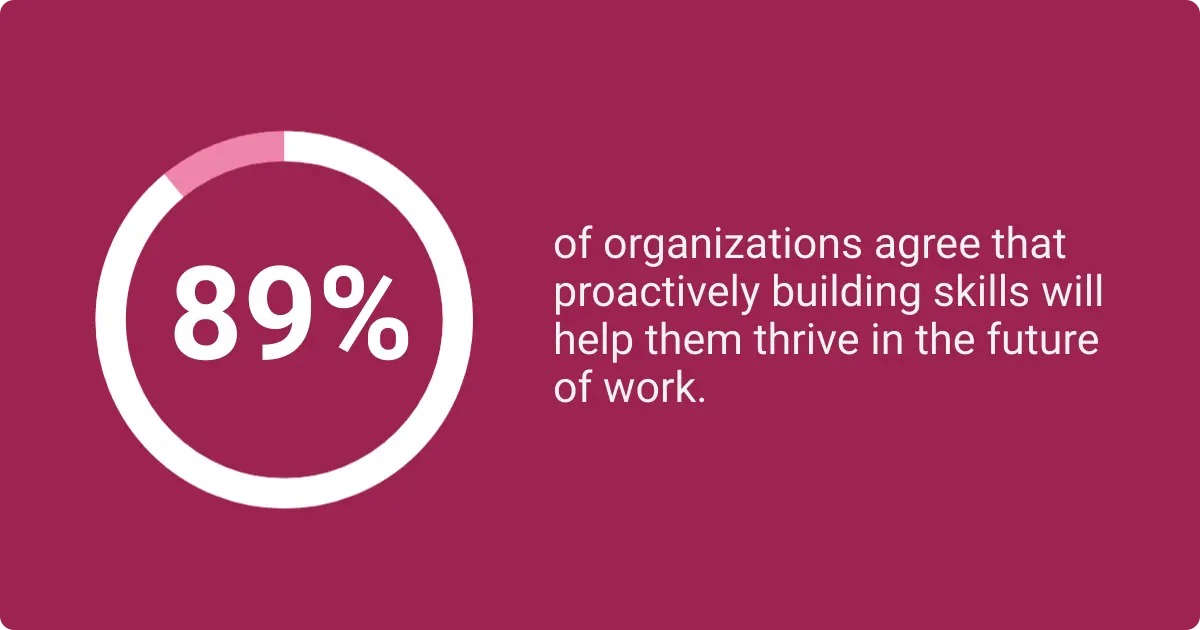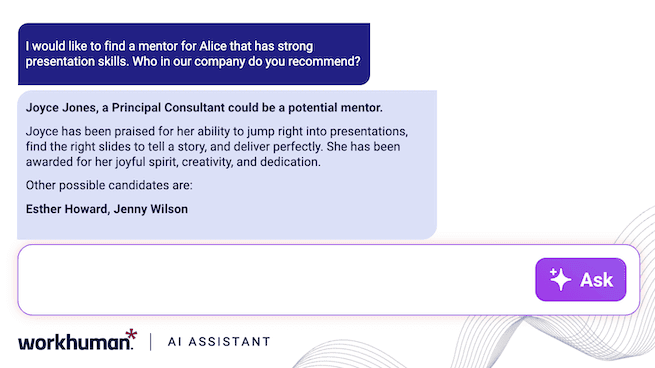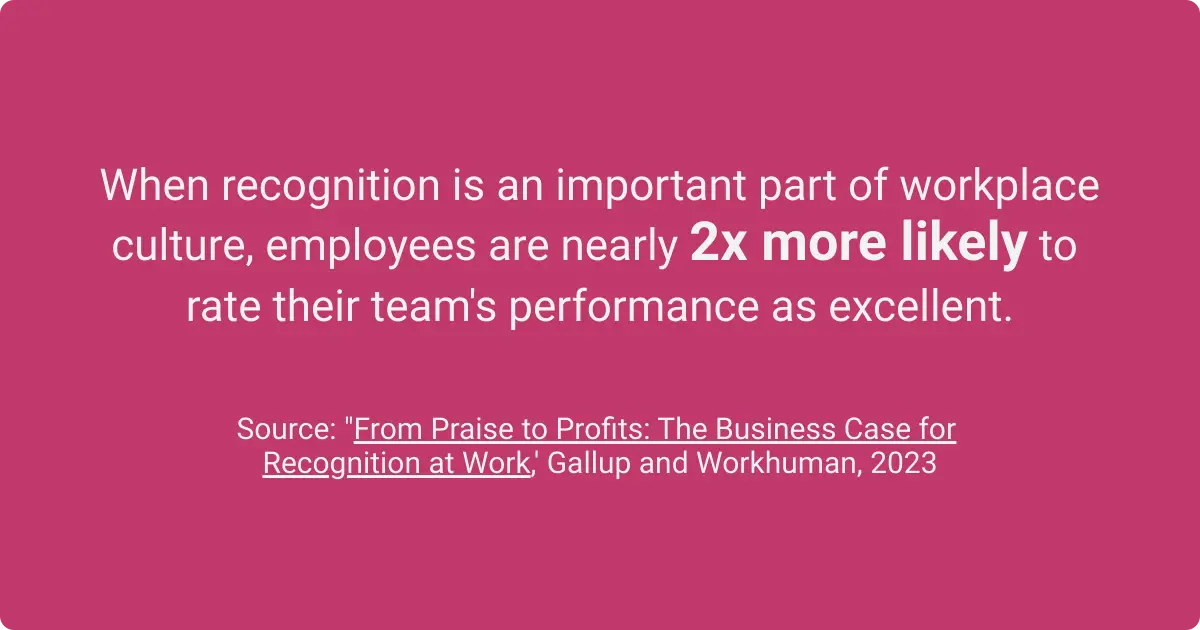Using AI, Recognition, and Reskilling Programs to Foster Organizational Agility
Organizational agility, or business agility, describes an organization’s capacity to adapt to ever-changing technologies, hierarchies, competitions, market conditions, and more. Agile organizations are more likely to thrive as they are prepared to constantly recalibrate and readjust without losing sight of their goals.
Read on to better understand how this specific type of operational efficiency can be supported by Artificial Intelligence (AI), recognition programs, and reskilling efforts.
What exactly does organizational agility mean?
At its core, organizational agility refers to a company’s ability to embrace change with grace. Organizational or operational agility is the ability to quickly adapt to new ideas, technologies, and emerging opportunities in today’s digital age.
Companies that don’t quickly adapt to constant cultural, technological, and social change are unlikely to remain competitive in today’s rapidly changing world of work. With so much opportunity for innovation available, embracing change and maintaining an entrepreneurial mindset, no matter the age of your business is sure to have a wealth of positive effects.
What are the benefits of organizational agility for my company?
Working to cultivate structural and operational flexibility can have many positive effects, including:
Increased productivity
Embracing technology, especially Artificial Intelligence (AI) can help employees be much more productive with their daily tasks, which can add up to considerable savings of both money and time. The use of AI to automate administrative tasks, along with AI for business intelligence, allows employees to save "mental space" and channel their energy into more strategic and impactful work.
While this “digital transformation” may seem overwhelming or intimidating at first, it’s important to note that employees who feel that they have technology that supports them at work are 230% more engaged and 85% more likely to remain in their jobs for over three years.
No one wants to complete the same rote tasks day in and day out for years. When your employees are encouraged to experiment with new ways of doing things, you can help them stay motivated and avoid workplace fatigue. Over time, this can lead to increased engagement and, ultimately, lower turnover.
Better employee engagement and company culture
Employees who are encouraged to innovate and express themselves are often the ones who are most excited to come to work every day. Fostering continuous learning, offering regular check-ins, embracing your employees as holistic individuals, and providing frequent recognition can all contribute to a more positive company culture.

Curious about how fostering an inclusive, psychologically safe corporate culture can enhance employee engagement and improve company culture? Check out this report!
Better customer satisfaction
Encouraging employees, especially those with client-facing roles, to remain open-minded and adaptable can help ensure that your customers’ ever-evolving needs are met. Customer expectations are forever in flux, so remaining versatile and developing new strategies to meet customer demands can have boundless effects.
Improved profits
The combination of decreased turnover costs, more satisfied customers, and a more productive, innovative workforce will inevitably result in improvements to your organization’s bottom line. Conversely, companies that don’t remain adaptable to changing times are sure to be left behind as major advancements in technology and changing culture in the workplace lead to rapid transformation at other companies.
What can I do to keep my organization agile?
You can ensure your team stays flexible and agile by:
Prioritize employee professional development
One of the most surefire ways to ensure that your company can remain adaptable is to ensure that each of your employees is living up to their fullest potential. Employees who are trained well and motivated to progress into managerial roles, whether they’re managing people or processes, are more likely to have higher emotional stakes in both your business and the industry developments at large.
Support skill-building and cross-training
To help employees develop, it’s imperative that you invest both time and financial resources into helping them learn new skills and build upon existing ones. In fact, recent data has shown that 89% of organizations agree that proactively building skillsOpens in a new tab will help them thrive in the future of work.

If your company has the budget, sending employees to professional development seminars or offering tuition reimbursement as a benefit can be deeply impactful and help ensure that your staff is always on the cutting edge of new ideologies and technologies in your industry.
This can also help build and foster professional relationships across the organization, fostering inter-departmental communication and collaboration.
Workhuman’s AI Assistant has been trained on recognition data to help you find potential mentors in your organization whose skills are already recognized by their peers.
See how Workhuman’s latest innovations can help you turn insight into action ->

If your company has the budget, sending employees to professional development seminars or offering tuition reimbursement as a benefit can be deeply impactful and help ensure that your staff is always on the cutting edge of new ideologies and technologies in your industry.
Implement a recognition program
Offering a formal recognition program, such as Social Recognition through Workhuman®, can do wonders for keeping your employees motivated through ever-changing times. Giving frequent, timely recognition not only shows your employees that you value their work but that you deeply value who they are as people, beyond just their productivity.
This can deepen their connection to your organization’s mission and help them remain engaged and productive.

Want to learn more about how recognition can keep your team agile and engaged? Download our report!
Hire with intention
It’s very easy to destroy the delicate fabric of your team’s synergy or your workplace culture with even just one bad hire. Making sure that every person you hire is deeply aligned with your organization’s core values will help you ensure that no matter what changes externally, the core of your company won’t be altered.
This also helps you avoid bringing in individuals with big egos who may be trained on new skills or technologies but look down on and act cruelly toward your existing staff, who are still learning to master these new skills.
How do I measure organizational agility?
Utilizing the right tools and strategies to measure your organization’s agility can help you get a clearer vision of how deeply these new strategies and mindsets are impacting your company:
Measure eNPS scores
Conducting employee surveys and tracking Employee Net Promoter (eNPS) scores can help you track shifts in your employees’ experience and relationship with your company. Your organization’s ability to implement change based on this data will greatly impact company culture, employee engagement, and retention.
Collect customer feedback
Feedback, both positive and constructive, from your clients and potential clients is absolutely invaluable. Not only can this have you tuned in to what is and isn’t working with your account management team or your technology, but it can also be a great way to gather suggestions for improvement at multiple stages of the sales cycle.
Track sales cycle time
Monitoring how long it takes to close deals and turn prospects into clients can provide your team with a wealth of valuable information. You can see where there are any issues in your sales cycle process and work to correct those hiccups and make things run more smoothly.
These actionable metrics and insights can help your team meet constantly evolving customer expectations, helping foster a more agile business.
Conclusion
Now that you understand why organizational agility is so important, you can begin to implement changes to create a more responsive workplace. Seizing improvement opportunities to foster a more agile company will help you increase productivity and adapt to market changes in today’s digital economy.
As you continue to cultivate agility within your organization, you’re also likely to see measurable improvements in employee engagement, retention, customer experience, and, ultimately, your company’s economic outcomes.
About the author
Anna Picagli
As an RYT500 yoga instructor and a Reiki Master Teacher, Anna is an advocate for holistic wellness, especially within the workplace. She’s extremely passionate about the brain-body connection and exploring how mental and physical wellness intersect.
Anna has experienced firsthand how chronic stress, overworking, poor management, and other organizational issues can lead to extreme burnout. Knowing the impact that a toxic work environment can have on a person’s body, psyche, and general sense of well-being, she now works to direct others away from facing the same fate.
As Workhuman’s Senior Content Specialist, Anna is a regular contributor to Workhuman iQ reports and aims to create resources that company leaders can reference to help improve their culture and empower their employees, creating healthier workplaces for everyone.
In her free time, she’s an avid solo traveler, a voracious reader, and a seasoned home chef. You can learn more about Anna’s work on LinkedIn or through the Yoga Alliance.